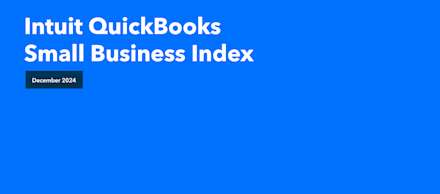
Intuit QuickBooks Small Business Index, December 2024
Simple, smart accounting software - no commitment, cancel anytime

FINANCE, BUDGETS AND CASHFLOW
For businesses large and small, managing cash flow effectively is essential to ensure operational success. One of the best tools available to businesses for improving cash flow is accepting direct debit payments.
By understanding how to use direct debit, small businesses can streamline their payment processes, reduce administrative burdens, and ensure a steady inflow of revenue.
With this in mind, here we'll explore what direct debit payments are, how they are used for businesses and further explore what benefits using them can provide.
Direct debit payments are an efficient method for collecting payments from customers directly through their bank accounts. Unlike traditional payment methods that require manual intervention for each transaction, direct debit allows businesses to automate payment collection processes.
With direct debit, customers authorise businesses to withdraw funds from their bank accounts on specified dates. This eliminates the need for manual payment processing.
When used correctly, this results in fewer delays and improved cash flow for small businesses.
To begin taking direct debit payments, businesses need to establish a direct debit agreement with their customers. Then, customers can authorise the business to collect payments automatically.
Once the agreement is in place, businesses can schedule recurring payments, such as monthly subscriptions or installment payments, without requiring customer intervention. This automated approach reduces the administrative burden on small businesses and makes sure payment collection is timely.
Starting to accept direct debit payments typically takes up to five working days to clear. The reason the process takes up to five days is because it involves pulling funds directly from the customer's bank account.
While not as instant as some online payment methods, such as credit card transactions, direct debit offers the advantage of automated payment collection without the need for customer action.
Businesses should factor in the processing time when planning their cash flow and payment schedules.
So, the key question: are direct debits really the route you want to take for payment collection?
There are various factors that determine whether direct debits are the best payment collection method for your small business. In order to decide, you’ll have to bear in mind numerous factors, including transaction costs, customer preferences and how efficient your administrative processes are.
While direct debit offers several advantages, such as reduced payment failures and making cash flow more predictable, it may not be suitable for every business. Put simply, it really depends on the nature of your products or services, customer demographics, and regulatory requirements.
If you’ve decided on direct debit payments as your payment collection method of choice, you’ll need to know how to set it up. So, with this in mind, here are the steps you’ll need to begin accepting direct debits.
Research and select a direct debit provider that suits your business needs. As touched on previously, you’ll need to consider factors like ease of use, cost-effectiveness, integration with accounting software, and customer support.
Once you've chosen a direct debit solution, you can add your customers' information to the platform and send them invitations to set up direct debit mandates. This can typically be done through the provider's online portal or integrated with your accounting software.
Customers need to provide authorisation for you to collect payments via direct debit. This authorisation is known as a direct debit mandate. It includes their bank details and permission to withdraw funds from their account.
Once the customer has completed the direct debit mandate, submit it to the bank using the BACS (Bankers' Automated Clearing Services) system. This process verifies the authorisation and sets up the direct debit instruction.
Direct debit regulations typically require businesses to provide advance notice to customers before collecting payments. This notice period is usually at least ten working days to allow customers time to review the payment details and ensure sufficient funds are available in their account.
With the direct debit mandates in place and the required notice given, you can start collecting regular payments from your customers. These payments will be automatically debited from their bank accounts on the specified dates, streamlining the payment process for both parties.
By following these steps, businesses can set up and manage direct debit payments with their customers.
Direct debit payments ensure a steady and predictable inflow of revenue for small businesses. This is because, unlike traditional payment methods that may involve delays or irregularities in payment processing, direct debit payments are automated and occur on predetermined dates.
Direct debit automation means a reduction in the administrative burden associated with tracking payments, and chasing overdue accounts.
Late payments can significantly impact a small business's cash flow and financial stability. Direct debit payments mitigate the risk of late payments by ensuring that funds are automatically withdrawn from customers' bank accounts on scheduled dates, provided the funds are present in the account.
Compared to other payment methods, such as credit card transactions, direct debit payments are typically more cost-effective for small businesses. With lower transaction fees and reduced reliance on third-party payment processors, direct debit often offers a cost-efficient solution for payment collection.
Last but not least, direct debit payments can offer convenience and flexibility for customers. This is because they no longer need to remember payment due dates or manually submit transactions, as payments are automatically deducted.
Say goodbye to late payments and manual invoicing. With QuickBooks and GoCardless integrated payment solutions, you can streamline your payment collection process and begin accepting direct debit payments with ease.
With our payment software, you can take control of your cash flow, automate payment collection, and save valuable time on administrative tasks. Our transparent pricing and hassle-free solutions mean you can focus on what matters most: expanding your business.
Start using QuickBooks and GoCardless for seamless direct debits today and unlock the full potential of your business.
The information on this website is provided free of charge and is intended to be helpful to a wide range of businesses. Because of its general nature the information cannot be taken as comprehensive and they do not constitute and should never be used as a substitute for legal, accounting, tax or professional advice. We cannot guarantee that the information applies to the individual circumstances of your business. Despite our best efforts it is possible that some information may be out of date. Any reliance you place on information found on this site or linked to on other websites will be at your own risk.
9.00am - 5.30pm Monday - Thursday
9.00am - 4.30pm Friday